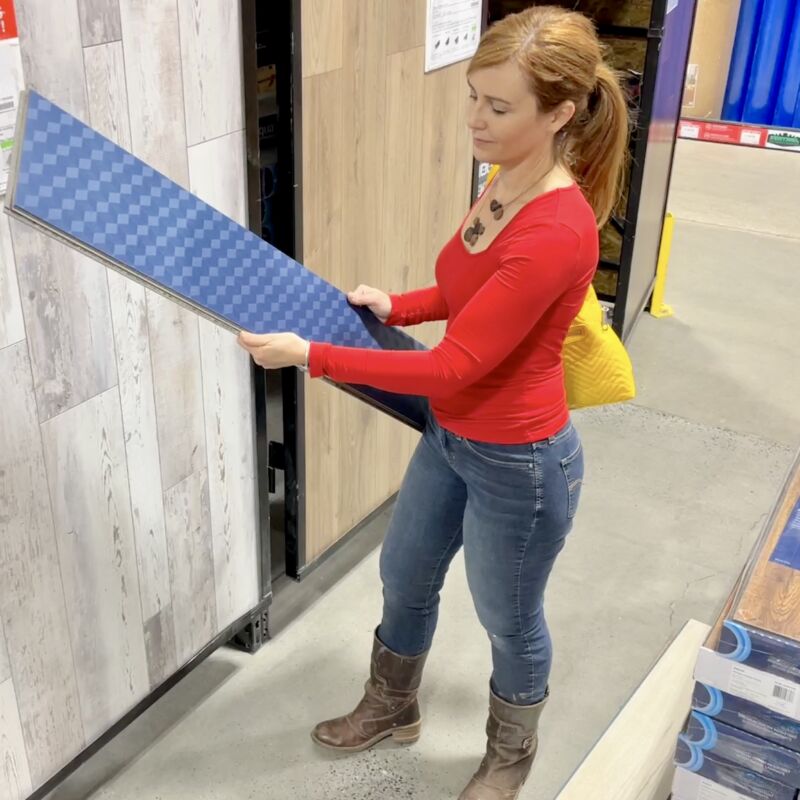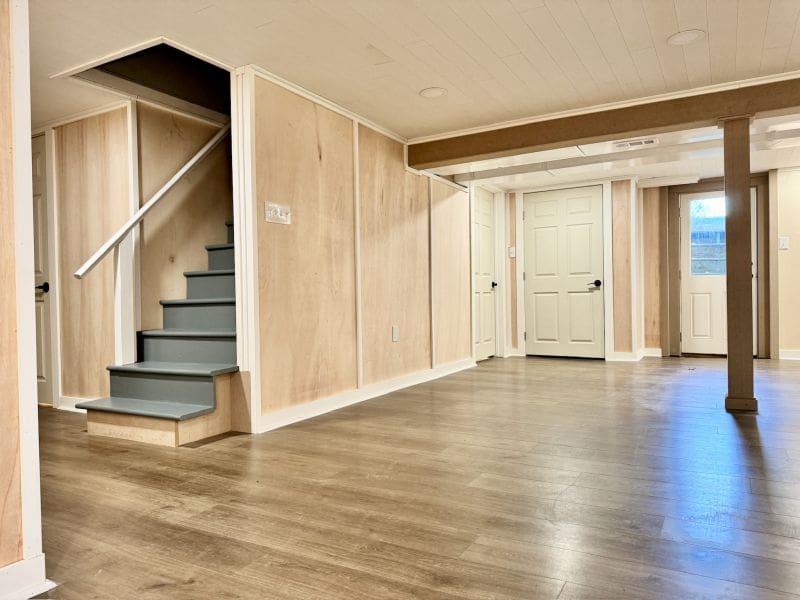LVP–Luxury Vinyl Plank–is everywhere. Coffee shops and high-end restaurants. In our basement remodels and in whole-house flooring projects. LVP is a smart choice in basements, especially budget-friendly basement remodels. So here are some tips and tricks that we’ve learned about how to install LVP flooring.
And, LVP goes anywhere. Install LVP over concrete, over existing flooring. Kitchen. Bath. Mudroom. Foyer. In addition, it does what it’s designed to do. It’s near zero maintenance, is so easy to clean that I can paint without a drop cloth. Further, it has changed the expectations of what flooring is and should be. From budget-focused remodels to high-end SuperHouse, our clients like the promise of LVP.
So it’s up to us to deliver on that and that is what this blog and video are all about.
That said, it is leagues from perfect. So we’ll also discuss that, too.
Good-Better-Best of LVP Flooring
I’m a generalist, not a flooring expert. I take a karate class a couple times a week and watch football on Sundays. So I’m not reading every column inch of home improvement news all the time. Therefore when stuff I don’t do all the time–like LVP–blips on my radar, I see that as a target because I know that if I don’t, there will be very expensive problems.
And there’s a good-better-best of LVP that we’ve discussed before. While good is OK, best is going to give you more peace of mind when it comes to longevity, quality, and underlayment.
Underlayment
As my wife Theresa wrote in another blog: “Underlayment is crucial when installing flooring over concrete—whether that’s a basement reno or a house built on a slab. Because the more robust the underlayment, the more the floor will absorb inevitable unevenness in the substrate. Plus, the better feet will feel over time. And, the more choices we have, the better we can serve our customers.”

Starting point
I also have high standards. In decades of remodeling, I’ve learned that spending 5-10-75-minutes making sure the starting point is good will save so much heartache, anxiety, labor, negotiation on the back end. In addition, it helps with good will. I need my customers to be super thrilled, not meh. We’re running a customer service business, not swiping a bar code.
Layout
It all starts with looking for issues early and layout. You can tell me I’m overdoing it and I won’t argue. But I also know this, something I probably got from Sun Tzu’s The Art of War: The easiest problem to solve is the one you don’t have.
Parallel
The basic idea here is to avoid sliver cuts. So you might know that LVP–and the trim elements we’ll discuss later–is super flexible. Nevertheless, I don’t do this every day, so I want to make sure I don’t spend hours and thousands of dollars to get to the last board and realize there is a major error.
To that end, I measure the room for parallel. I want Wall 1 to be parallel to Wall 2. It was here. And spending 15 minutes figuring that out was way better than spending all kinds of time fixing a problem when 95% of the floor was down.
How to Install LVP Flooring in a Basement Remodel
Here’s a detailed look at how to install LVP flooring in a basement remodel. After watching this video, you’ll know the steps involved, and also the tools needed and the essentials to getting this kind of flooring installed successfully.
But if you have any questions, share in the comments or send us a note. We’re happy to help.


